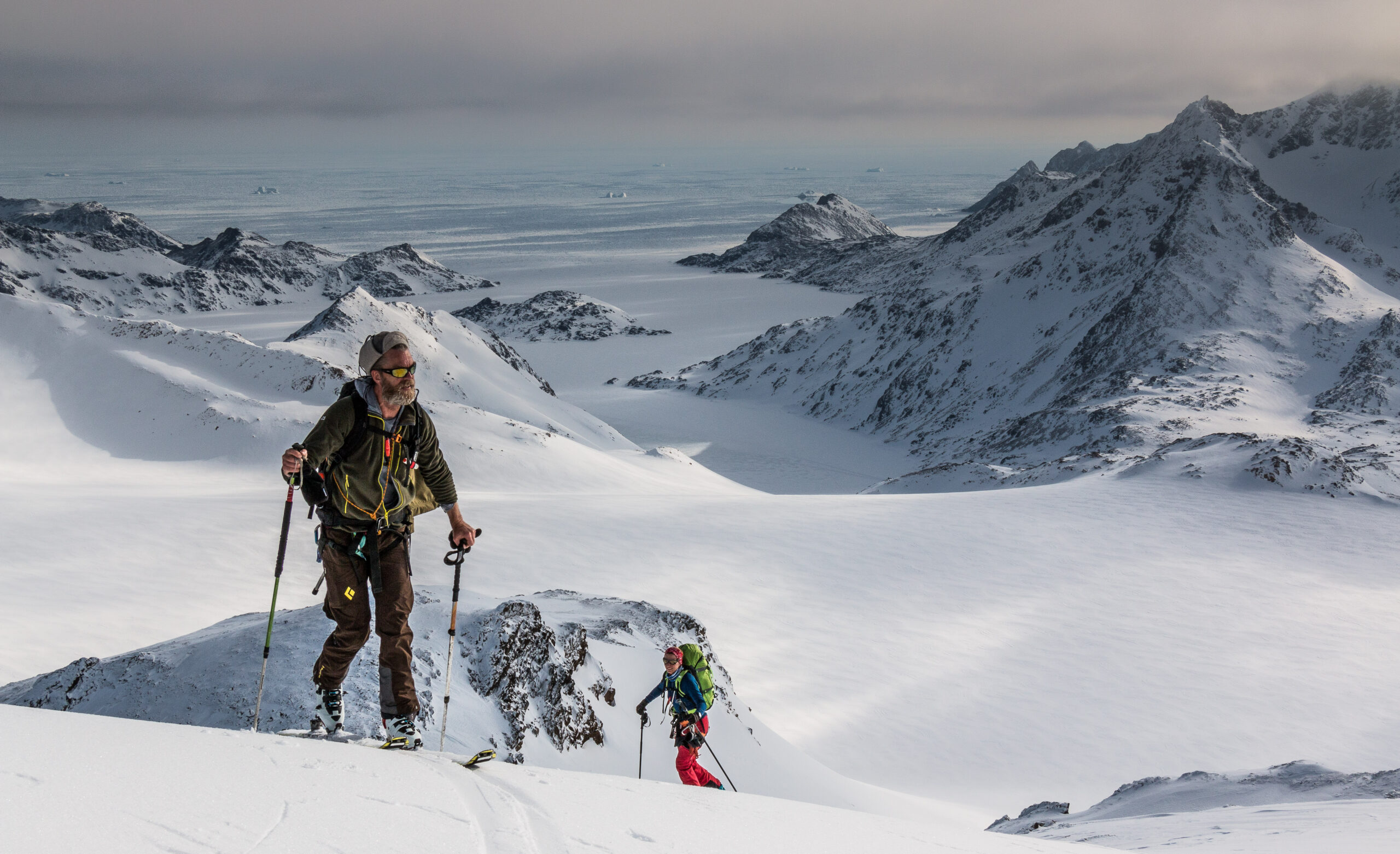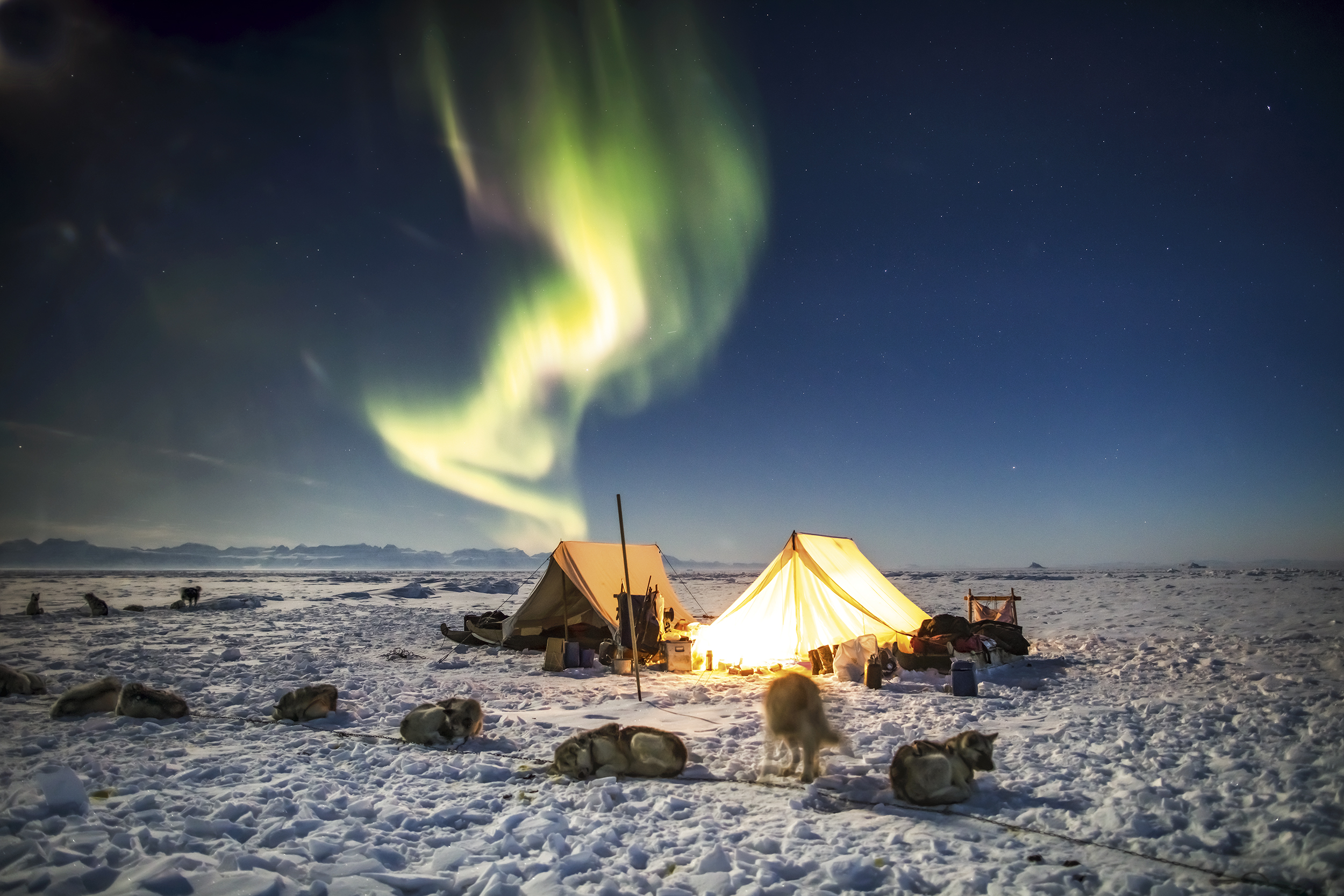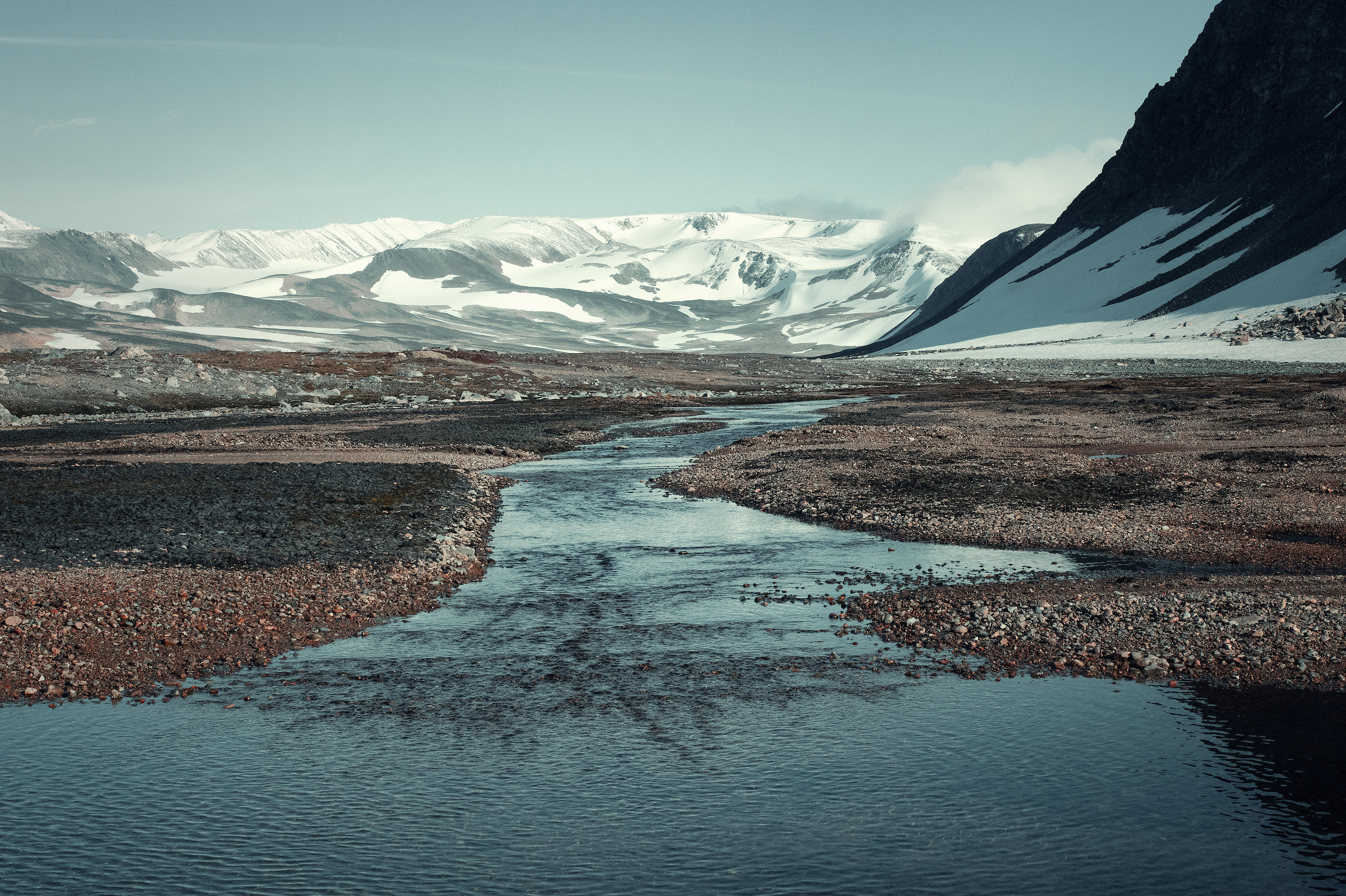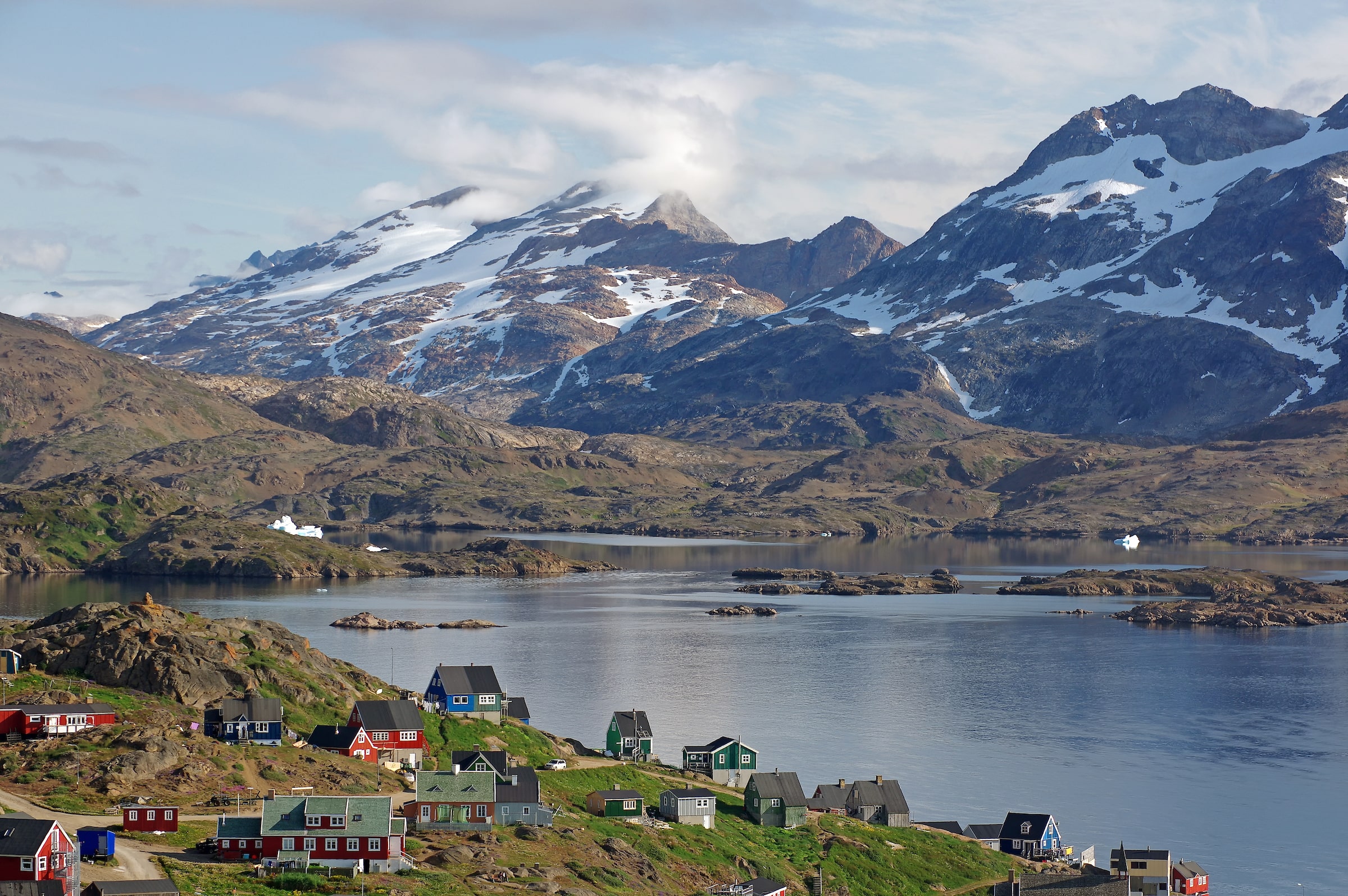Resources
Photo: Norris Niman – Visit Greenland
Explore the vibrant tapestry of towns and settlements in East Greenland. Nestled between ice-capped peaks and the azure Arctic Ocean, these communities are a harmonious blend of ancient traditions and modern life. Each town tells a unique tale, echoing with stories of ancestral Inuit hunters, pioneering spirits, and the rhythms of daily Arctic life. Venture beyond the well-trodden paths and discover a world where culture, history, and nature intertwine in the most mesmerizing ways. East Greenland awaits, with its towns and settlements as the heartbeats of this vast, icy expanse.
FAQ - Frequently Asked Questions
Activities
What are the best activities to try in East Greenland?
East Greenland offers many unique experiences such as whale watching, iceberg excursions, kayaking through the fjords, and trips to observe the magnificent wildlife including polar bears and seals.
Flora & Fauna
Can I fish in East Greenland?
A fishing license is required in order to fish. The license can easily be bought online in advance for the desired date or period. The fishing license provide the holder the right to fish with a rod or hand line. You are only allowed to fish as much as you can consume. Common fish would be cod, halibut or redfish which are caught with rod or hand line. Price for a fishing license are 75 DKK for 24 hours; 200 DKK for 1 week; 500 DKK for 1 month. Please find the guidelines for acquiring a fishing license here.
Can I see polar bears in East Greenland?
If you would like to see a polar bear, we recommend you to choose a polar bear safari, where you have the best chance to encounter a polar bear in their natural habitat.
What wildlife can I expect in East Greenland?
In East Greenland, you can expect to encounter a diverse array of wildlife, including polar bears, Arctic foxes, seals, whales and various bird species, making it a paradise for nature enthusiasts and wildlife photographers. The region’s pristine and remote landscapes offer unique opportunities for wildlife observation and appreciation.
When is the best time to visit to see whales?
Whale watching tours are most popular in the warmer months when whales come closer to the shore for feeding.
Gastronomy
What's the food like in East Greenland?
East Greenland offers a mix of traditional Greenlandic dishes like whale, seal, and fish as well as more western meals. Local specialties include dried fish and seafood.
Health
What about medical care in East Greenland?
In East Greenland, the biggest towns – Tasiilaq and Ittoqqortoormiit – have a hospital/health care center, while all other settlements in the region only have a nursing station. These facilities provide a limited range of service and treatments. Individuals with more severe medical conditions have to go to the national hospital in Nuuk or to specialized hospitals in Denmark. Therefore, the Greenlandic health authorities strongly recommend obtaining comprehensive travel health insurance that covers various aspects of healthcare needs, including sudden onset of illnesses, hospitalization, therapy, medication, dental care, and medical evacuation, including ambulance transportation from remote or isolated areas in Greenland. Additionally, it is advisable for travelers to bring their own regularly prescribed medications since specific products may not always be readily available. Below you can find the rules governing health care provision for temporary residents, which is defined as people staying in Greenland for six months or less for study or vacation.
Infrastructure
What is the story behind the colorful houses in East Greenland?
The tradition of coloring houses in East Greenland began with the introduction of the first wooden houses. Given that East Greenlandic is solely a spoken language, in the initial colonial period, most Greenlanders were not able to read Danish written language, with the colors primarily functioning as practical signage in the established settlements. A red building indicated a store, yellow denoted a hospital, and a blue structure marked the local fish factory. While many buildings now use colors for decorative purposes, some still uphold this historic tradition.
Red: churches and stores, including the houses where the priest or shop owner lived. The most commonly used color.
Yellow: hospitals, including the houses where the doctors or nurses lived
Green: radio communications, or later, telecommunications buildings in general.
Black: police
Blue: factories, fish plants
How is the internet connection in Tasiilaq?
The internet connection in Tasiilaq can be limited compared to larger cities. It’s advised to prepare for periods of slower internet speeds or limited access.
Landscape
What is the highest mountain in East Greenland?
The Mount Gunnbjørn in East Greenland is the highest point in Greenland. The summit is 3,694 m above sea level. Situated approximately 60 kilometers inland from the Blosseville Coast, the Watkins Range can be found in King Christian IX Land, characterized by a cluster of nunataks enveloped by expansive, dynamic glaciers. This range boasts imposing ice-clad peaks and rugged cliffs, with the principal summit being Gunnbjørn Fjeld, holding the distinction of being the loftiest peak within the Arctic. It is also the highest peak located north of the Arctic Circle. Accessing this region is primarily achieved through ski-equipped airplanes departing from Iceland, and it ranks among the most frequently explored mountainous regions in Greenland, necessitating the acquisition of an expedition permit for entry.
Language
What languages are spoken in East Greenland?
East-Greenlandic is the official language. However, many also speak Danish, and English is understood by many, especially in the tourism industry.
Live Webcams
Where can I find live webcams showing imageries from East Greenland?
You can currently view live webcams from Tasiilaq by clicking on the provided links below:
Safety
Is it safe to hike alone in East Greenland?
Due to the rugged terrain and wildlife, it is recommended to go on guided tours or hike in groups. Always inform locals about your plans and route.
Transport
How do I get to East Greenland?
To visit East Greenland, it’s best to fly via Iceland. With Icelandair you can connect via Keflavik Airport (KEF) from offering flights to Kulusuk (KUS) for the Ammassalik area or with Norlandair from Reykjavik (RKV) via Akureyri to Constable Point (CNP) for Ittoqqortoormiit. Depending on the season there is a different frequency in connections for these regions, with a flight plan available on their websites. Further helicopter transport in each of the regions is operated by Air Greenland. Within Greenland, the connection between Kulusuk (KUS) and Nuuk (GOH) with Air Greenland is only available twice per week. If you prefer a cruise, expedition ship or sailing boat, select a trip that allows ample time for exploring the breathtaking region.
How do I get around in East Greenland?
To navigate East Greenland, you can utilize different transportation options depending on the season. During the summer, consider using boats as the go to for accessing different settlements, fjords and popular tourist spots and hidden gems. Helicopters provide an efficient means of travel year-round both for passengers and cargo, especially the connection between Kulusuk and Tasiilaq or Constable Point to Ittoqqortoormiit, while the connection between Tasiilaq and the other settlements is only scheduled once or twice per week. In the winter months, you can also rely on snowmobiles and dogsledding for transportation.
How can I travel between towns and settlements in East Greenland?
In East Greenland, transportation between towns and settlements primarily relies on boats during summer and dogsleds or snowmobiles in winter. There are also limited helicopter services provided by Air Greenland connecting certain towns and settlements. Due to the region’s rugged terrain and lack of roads between communities, there are no car routes for inter-town travel. It’s essential to plan your journey in advance, taking into consideration the seasonal changes and available transportation options. Always consult with local tour operators or the community’s information center for the most current travel advice and arrangements.
What is the baggage allowance on flights to Greenland?
Every airline has their specific luggage regulations, which are available on their respective websites. Icelandair has a unique baggage allowance for trips to Greenland. Please keep in mind that if you arrive in Kulusuk with Icelandair and afterwards transfer to the helicopter service provided by Air Greenland, your luggage must comply with both regulations on allowance.
Whom to contact in case of flight delays and cancellations?
In case of delay, cancellation and rebooking you will be informed via text message, using the number that has been used when making the booking. In case of further questions you can contact their customer hotline of the responsible airline:
Air Greenland +299 70 12 12 (contact Air Greenland)
Icelandair: +354 50 50 100 (contact Icelandair)
What to do in case of flight delay, cancellation and rebooking?
In case of a delay or cancellation of your flight, the responsible airline will take care of your accommodation and meals, if you do not reside in the city in question. You will receive further information at the airport/heliport or the airline will contact you with the necessary information via text message. There is always the possibility to contact your travel agent booking the flight tickets or the airline directly.
What is the difference between a heliport and helistop?
A heliport such as Tasiilaq, has its own heliport building for check-in, baggage handling and related matters. A helistop consists of a landing platform but lacks its own building, with all helicopter flight-related matters being handled at the local Pilersuisoq supermarket.
Trip Planning
Are there any specific clothing or equipment I should bring?
The weather can be unpredictable, so layering, waterproof outerwear, and sturdy hiking boots are recommended. Also, remember sunscreen and sunglasses, especially in the summer months.
What is the weather like in East Greenland?
The climate in the Ammassalik area is described as ’polar tundra’, while in Ittoqqortoormiit, further north along the east coast, falls under the classification of ‘high Arctic’. East Greenland’s weather presents a challenging and harsh environment, particularly during the winter season, yet it offers remarkable opportunities for those in search of unique Arctic adventures. Travelers should be well-prepared for the unpredictable weather conditions when exploring this remote and captivating region. In general, East Greenland’s weather is marked by its Arctic nature, featuring noticeable seasonal shifts: brief but temperate summers contrasting with prolonged, dark, and frigid winters. Summer offers extended daylight hours, while winter blankets the landscape in snow, with the Northern Lights illuminating the night sky.
When can I see the Northern Lights in East Greenland?
In East Greenland, the Aurora Borealis, also known as the Northern Lights, paints the Arctic skies with its ethereal and mesmerizing display. This remote and pristine region offers a unique backdrop for witnessing this natural phenomenon. The beautiful mountain ranges set a perfect location for shooting Northern Lights. You can witness the northern lights from September, if you’re fortunate, all the way through April. During September, they become a captivating part of your fall adventure in the region. For the ultimate winter experience and the best chances to enjoy the mesmerizing Northern Lights, the prime period to visit is from mid-February to April. The most active Aurora can usually be found around the equinoxes in March and September, where most of the northern lights appear between 17:00 and 02:00. While you might already get a glimpse of the Northern Lights from the window of your accommodation, cozy and comfortable gazing at the night sky, it is definitely worth stepping outside, minimize lights pollution to observe the Aurora Borealis in its full beauty.
When is the best time to visit East Greenland?
The best period to visit East Greenland depends on the adventure you want to have in East Greenland. Are you looking for sailing through endless summer nights admiring icebergs and the coastal scenery, flourishing Arctic flora, kayaking, whale watching, trekking and camping the rugged landscapes in East Greenland? Then the best time for you to visit is from end of June until the end of September. Are you searching for a winter adventure with dog sledding, snow-covered mountain peaks, heli-skiing, ice fishing and northern lights? Then we recommend you to plan your adventure in the period from mid-February to the end of April.
Travel Guides and Tips
Practical information when planning your trip to East Greenland – here you can find all the tips gathered one place
Maps & Route Planning
Where to get a map of destinations in East Greenland and how to plan your routes.
Navigating the rugged and mesmerizing terrains of East Greenland requires more than just enthusiasm; it demands precision. Whether you’re trekking through the icy expanses or sailing the intricate fjords, let our guides be your compass to the heart of East Greenland.
Map of Tasiilaq
Explore the heart of East Greenland with our detailed Tasiilaq map. Navigate the colourful streets, cultural landmarks, and hidden gems of the town with ease. This map not only serves as a reliable guide but also as a keepsake to remember the vibrant spirit of Tasiilaq. Perfect for framing or as a travel companion, our illustrated maps will become your go-to guide!
Map of the Ammassalik Region
Broaden your horizons with our regional map. From the sprawling glaciers to the intricate fjord systems, get a panoramic view of East Greenland’s breathtaking landscapes. This map offers an expansive view of the region, helping you to plot your adventures and immerse yourself in the vastness and beauty of East Greenland.
Map of Ittoqqortoormiit
Explore the unique charm of Ittoqqortoormiit, where vibrant, colorful houses punctuate the stark Arctic landscape. This lively settlement, with a welcoming community of 363 residents, offers a rich array of experiences. Highlighted on the map, you’ll find the essential helistop connecting this remote town to the world, along with vital amenities. Experience local culture at the museum, or embark on thrilling adventures like dog sledding, hiking, and whale safaris. This map is your gateway to experiencing the essence of Arctic life in Ittoqqortoormiit.
Map of the Ittoqqortoormiit Region
Venture into the awe-inspiring expanse of the Ittoqqortoormiit area, featuring the breathtaking Scoresbysund fjord system. Covering 38,000 square kilometers, this region is a haven for wildlife enthusiasts, offering glimpses of polar bears, walruses, and diverse bird species. The map guides you through dramatic landscapes of rugged mountains, icy fjords, and historic sites. Use this map to navigate the pristine wilderness, partake in guided tours, and immerse yourself in the serene beauty of one of Greenland’s most secluded areas.
Online Resources
Where to find trusted weather forecasts, detailed areal maps and comprehensive information to prepare for your East Greenland adventure.
DMI – weather forecast
The official website of the Danish Meteorological Institute, providing detailed weather forecasts, warnings, and meteorological data for Denmark, the Faroe Islands, and Greenland.
Greenland Travel Documentary / East Greenland
Anna and Lucas Jahn share experiences from their 16 days summer adventure in the Ammassalik region. Follow along their journey of exploring with handy tips and recommendations for travelers.
Safety Information
Stay safe during your adventure. Learn about the guidelines for travelling in East Greenland.
Traveling in East Greenland is an awe-inspiring experience, but the rugged Arctic environment demands a heightened sense of caution. As you embark on your journey across this vast, untamed landscape, familiarizing yourself with essential safety information is paramount.
First and foremost, always inform your accommodation or local provider about your travel plans for the day, especially if you’re venturing into remote areas. They can give advise about your plans for the day and give recommendations. East Greenland’s weather is unpredictable, and storms can roll in suddenly, making it crucial to check local forecasts before any outing.
Wildlife encounters, especially with polar bears, are rare but not impossible. Always maintain a safe distance, and never approach or feed wild animals. If hiking or camping in remote areas, it’s recommended to carry polar bear deterrents or travel with local guides familiar with the terrain and its potential hazards.
The terrain in East Greenland can be challenging, with its glacial crevasses and swift rivers. It’s advisable to wear sturdy footwear, preferably with ankle support, even crampons and additional climbing equipment, when neccesary. Our recommendation is to always use marked trails where available. When exploring glaciers or undertaking mountain treks, hiring a local guide is highly recommended.
Sea travel has its own set of challenges. Icebergs, while majestic, can be unstable and pose risks. Always respect safety guidelines if you’re kayaking or boating near these ice giants. Ensure your vessel is equipped with communication devices, especially if sailing in remote fjords.
Lastly, while East Greenland is a haven of natural beauty, it’s essential to be prepared for its unpredictable nature. Carry a basic first aid kit, ensure your communication devices are charged, and always let someone know your plans. Embrace the beauty of East Greenland, but always prioritize your safety and well-being.
Information Guide
Download our comprehensive East Greenland Information Guide.
This guide offers invaluable insights into East Greenland’s breathtaking landscapes, rich history, and vibrant culture. Perfect for travelers and researchers, it provides detailed information to help you explore the region’s unique experiences and geographical wonders. Discover the beauty and heritage of East Greenland with this essential resource.
Contact Information
For comprehensive tourist information and inquiries, reach out to the dedicated team behind Visit East Greenland.
The Tourist Office “Skæven” in Tasiilaq
Skæven, located in the heart of Tasiilaq, stands as the prime hub for tourist information in the region. This establishment is dedicated to ensuring visitors have a seamless and memorable experience in East Greenland. Whether you’re seeking adventure trails, local insights, or cultural experiences, Skæven’s knowledgeable team is your go-to source, making it an essential stop for anyone venturing into the captivating landscapes of Tasiilaq.
Address: Ujuaap Aqqulaa B-48, 3913 Tasiilaq, Greenland
Telephone: +299 58 76 46
Email: info@eastgreenland.com
Useful Contact Information
Ammassalik Area
Police:
Tasiilaq Hospital:
Kulusuk Airport:
Tasiilaq Heliport:
Tasiilaq Fire Department:
Useful Contact Information
Ittoqqortoormiit Area
Police:
Ittoqqortoormiit Hospital:
Nerlerit Inaat Airport:
Articles
Discover more about the enchanting East Greenland through our curated articles.
Dare to Discover Contrasts
From the raw Arctic landscape to the warm Inuit culture, from midnight sun to northern lights. East Greenland is full of contrasts.
Photo: Jason Charles Hill – Visit Greenland
Unplug for Real!
Disconnect from digital life. Rediscover the connection with yourself, nature, and the people around you in East Greenland.
Photo: Jason Charles Hill – Visit Greenland















